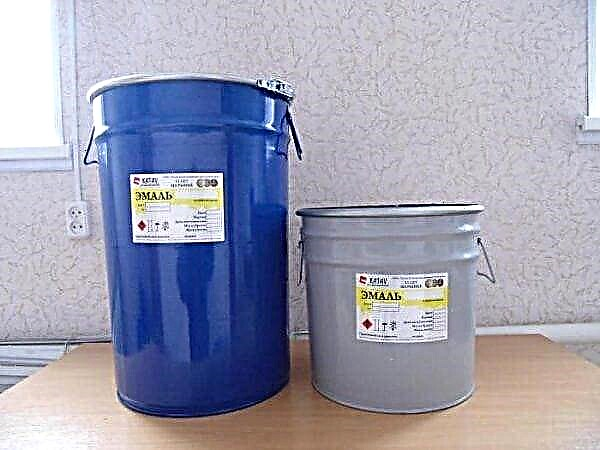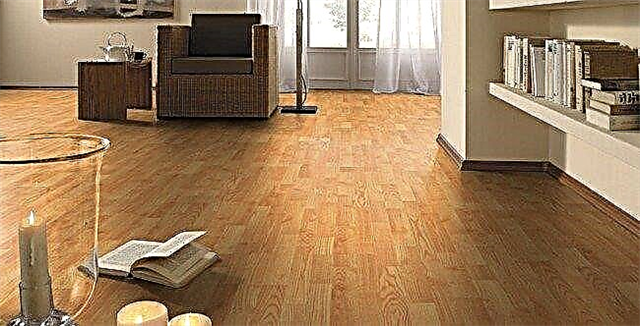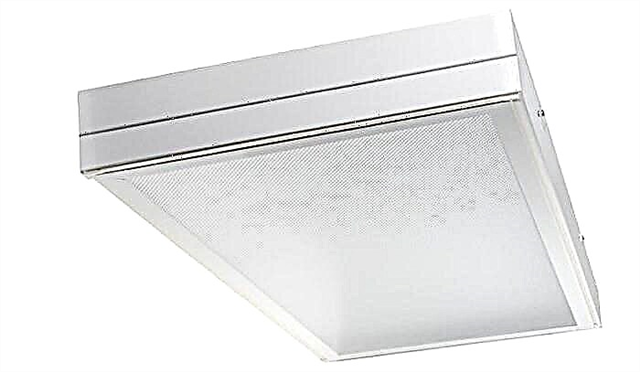Well-known incandescent lamps give only half of their energy consumed to lighting. Technological progress always goes forward; energy-saving lamps (ESL) have been in demand in the markets for a long time. Their cost is much higher, but the service life is large and quick payback.

A brief history of the emergence of ESL
In 1980, Philips introduced a compact spiral screw lamp with magnetic ballast. She became the first competitor to an incandescent bulb.
In 1985, Osram launched an electronic ballast bulb.
In 1995, Chinese companies established the production of spiral ESL.
How is the principle of operation of an energy-saving lamp
The energy-saving lamp is arranged simply: bulb, ballast, base. The base has the same structure as a conventional bulb.
A flask of a curved type, covered with phosphor layers, filled with an inert gas, mercury vapor. This causes the light bulb to glow at the time of connection to the network.
For a glow to occur, layers and vapors alone are not enough. It occurs due to ballast. He is a kind of starter. It is located between the bulb and the cap. Also, its electronic form eliminates flickering of light, which is often observed in long daylight bulbs. With voltage drops, the ballast holds the nominal power level, heats the electrodes. The life of the ESL itself depends on its quality.
The principle of operation of an energy-saving lamp is its ignition. Ignition of a light bulb occurs when connected to a power supply, this causes a discharge among the electrodes, then the current is directed through the mercury vapor and gas, while the electrons collide with the mercury atoms.
Almost all radiation is ultraviolet (98%), it is not perceived by our vision. What passes through our eyes is the light that comes from the layers of the phosphor. The shade of the room lighting depends on its composition.
We recommend watching the video review:
In everyday life, several types of ESL are used for lighting:
- Halogen - save electricity up to 50%.
- Luminescent - save up to 80%.
- LED - saving 80-90%.
Now in consumption a greater number of fluorescent bulbs. They are made of such types: tubular, ring-shaped, compact (a variety of tubular, only the size is much smaller). Compact bulbs in comparison with incandescent give the opportunity to save up to 80% of electricity. In addition, the service life exceeds 15 times. A positive feature is the absence of a large amount of heat generated. Therefore, overheating will not occur when used in lighting fixtures. The shade of the emitted light is selected individually. It happens in warm and cold shades. The negative side is the mercury content, the response to the switching frequency, at low temperatures, the light supply decreases, the problem with disposal.
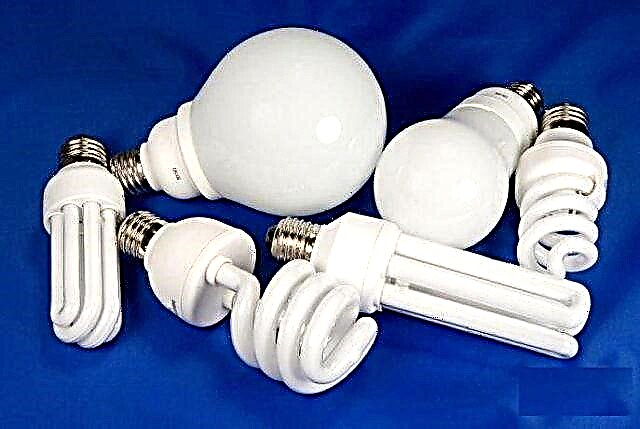 energy-saving lamps glasses "width =" 640 "height =" 429 "srcset =" / images / imag-2020/1116 / xarakteristika-vidi-vibor-6B21.jpg 640w, https://lampasveta.com/wp-content/uploads /2019/05/147224262_w640_h640_energosberegayuschaya-lampa-kll-300x201.jpg 300w "sizes =" (max-width: 640px) 100vw, 640px "/>
energy-saving lamps glasses "width =" 640 "height =" 429 "srcset =" / images / imag-2020/1116 / xarakteristika-vidi-vibor-6B21.jpg 640w, https://lampasveta.com/wp-content/uploads /2019/05/147224262_w640_h640_energosberegayuschaya-lampa-kll-300x201.jpg 300w "sizes =" (max-width: 640px) 100vw, 640px "/>
More advanced halogen energy-saving light bulbs. They include halogen elements, which allows you to maintain brightness throughout the entire period of operation. The light emitted from a light bulb is similar to daylight, so all the shades of things are transmitted in a natural way. The service life of this type is only up to three times that of a conventional incandescent lamp. Energy savings of up to 50 percent.
The most advanced are LED bulbs. They have high efficiency and a service life of up to 80 thousand hours. They emit blue, green, red, yellow, white shades. Therefore, they are widely used in decoration, architectural design. Also, this species does not contain mercury, which makes it environmentally friendly. There is no surface heating, which corresponds to fire safety standards. The only disadvantage is the high cost compared to other types.
Modern energy-saving lamps, relative to the size of the cap, have two types:
- With conventional cartridge (E27),
- With a small cartridge (E14).
The shape of the lamps has a spiral and u-shaped appearance.
The shape of the light does not change the quality of the light supply! But spiral energy-saving lamps are more expensive because of the difficulty in manufacturing.
Let there be light: which energy-saving bulbs to buy?
Incandescent lamps have long left the pedestal of lighting equipment, skipping forward energy-saving. This type of light bulb is characterized by low power consumption and excellent light transmission. There are LED and fluorescent energy-saving lamps, each of which have their own advantages and disadvantages. What energy-saving light bulbs are best for home? Let's consider each type separately.
Fluorescent lamps
This category of energy-saving light bulbs is divided into two types. It is linear (traditional) and compact. The essence of their device is the same. This is a sealed glass flask with gas (argon or neon) and a small amount of mercury inside it. The glass tube is internally treated with a phosphor. The electrodes connected through the ballast to the power supply are also inserted here.
It turns out that mercury vapor mixed with gas emits ultraviolet light, which in itself does not emit daylight. Therefore, the flask is treated with a phosphor. It is this substance that converts ultraviolet rays into daylight.
 Fluorescent lamps
Fluorescent lamps
What is the difference between linear fluorescent lamps from compact ones?
- First, the size. Spiral or U-shaped bulbs perform the same functions, they are just specially twisted into complex shapes to resize (reduce).
- Secondly, this is the installation of ballasts. In linear analogs, it is located as a separate element of the lamp, and is fixed on the housing. In compact designs, the ballast is installed in the lamp base or in the bulb itself.
By the way, the base of energy-saving bulbs is exactly the same as that of incandescent lamps. Therefore, it is convenient to install them in any chandelier or sconce instead of the latter.
It should be noted that linear structures are called so, because their main variety is a straight-line tube. They have been known to consumers for a long time and had the name "fluorescent lamps." Currently, manufacturers offer different types of linear designs: ring, U-shaped, dual. They do not have a base, two metal rods are installed at the end of the tube, which are connected to the mains via special terminals.

There is a division in linear fluorescent lamps, where the dimensions of the bulb, or rather its diameter and length, are the basis. Note, the larger the size of the light source, the greater its power, the more current it consumes. Typically, linear structures are used for lighting in office premises and production. In residential premises today, compact analogues are most often used, which gradually displace linear ones.
Compact lamps
We turn to the analysis of CFLs (compact fluorescent lamps), where we will analyze what criteria they differ in. And the first criterion is purely constructive - this is the size of the cap. There are four positions:
- E27 - traditional.
- E14 - the minion.
- E40 - under a large cartridge.
- 2D, G23, 2G7, G53, and so on, are decorative bulbs for spotlights, for lighting, and more.
The numbers in the marking indicate the diameter of the cartridge in millimeters. CFLs are available on the market both in open form and with a diffuser, while the service life guaranteed by manufacturers varies from 3000 hours to 15000. It all depends on the quality of the materials used in the lamp.
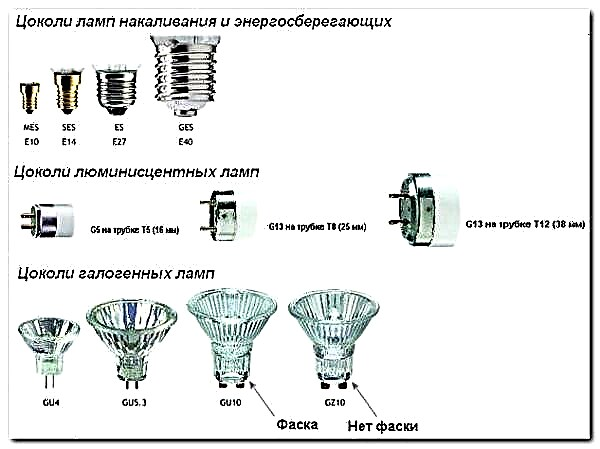 Lamp caps
Lamp caps
The second criterion is the size of the tube. There are few options: 7, 9, 12, 17 mm. The third criterion is the color of the light flux. There are four main spectra:
- White is warm.
- White is cold.
- White is neutral.
- Daylight.
There is a large category of colored fluorescent lamps.
The fourth criterion is the shape of the glass tube: spiral and U-shaped. By the way, the latter can have a different number of arcs: 3, 4 or 6. Note that the spiral-shaped light sources are smaller in size than the U-shaped ones. But in other respects they are similar. True, spirals are more expensive, because the technology of their manufacture is more complicated.
CFL Advantages
- Energy savings compared to incandescent bulbs by almost 80%. At the same time, the quality of illumination does not decrease.
- Long service life. Therefore, experts recommend installing CFLs in hard-to-reach places, for example, in fixtures installed on high ceilings.
- They emit a minimum of heat, which allows the use of these fluorescent energy-saving bulbs in fixtures of complex design, as well as in stretch ceilings.
- Uniform distribution of the light flux due to the increased luminous area of the device.
- Using energy-saving lamps of different temperature glows, you can diversify the lighting of the room.

Disadvantages
The disadvantage of fluorescent lamps is the presence of mercury in them. By the way, it can be in a flask from 1 mg to 70 mg. Therefore, you need to handle them carefully, the main thing is not to break the phone. But here some questions arise before consumers, namely, how to utilize LL, where to take them?
Firstly, if the glass flask is broken, it is necessary to collect the broken fragments, put them in any sealed container and tightly close. Secondly, the place of contact with mercury must be treated with a solution of potassium permanganate. Thirdly, the room must be very well ventilated.
As for recycling, there is a law on this subject, which clearly stipulates that the administration of cities and towns deals with the collection of waste fluorescent lamps. They are the ones who organize the assembly points. If the city is large, then the fee is passed on to the TGS, if small, then certain services are involved.

How to choose the right
First of all, a lamp is selected on the base. That is, whether it will go into the lamp installed in the house or apartment in advance. Next, the power of the light source is determined.
Attention! The use of CFLs with a power above 15 W in residential premises is not recommended. Their light is too bright.
The next selection criterion is the lifetime. Everything is obvious here, we must choose the light bulb for which this indicator is the longest. Pay attention to the color temperature. It is very important to correctly approach the purpose of the room itself. For example, in the hall it is best to install lamps with a neutral white temperature, in the room where the household is resting, with white warm. As for the price, U-shaped bulbs are cheaper.

LED energy saving lamps
This is a more modern and safe device, in addition, it is a ready-made lamp, consisting of:
- Basement.
- LEDs and the board on which they are mounted.
- A radiator whose functions include cooling the LEDs.
- Drivers
- Diffuser.
The diffuser is installed with one single purpose - to expand the light beam. Indeed, for LEDs it does not exceed 60º.

Now we turn to the topic - types of energy-saving LED lamps.
- LED lamps.
- For highlighting.
- For landscape design and architectural lighting.
- Street lights.
- Explosion proof.
- Spotlights.

- Traditional with threaded connection (E27 and E14).
- Bulb type (T). This is a kind of tube with a swivel base.
- Pin type (G).
- Spotlights (S).
- Pin (B).
- Focusing (P).
- In which the contact is recessed (R).
Benefits
- Efficiency is eight times higher than that of incandescent lamps.
- Service life up to 100,000 hours.
- High rates of environmental friendliness.
Regarding the question of how to choose the right one, it must be borne in mind that LED light sources for residential premises should not exceed 20 watts. If you need a source that will evenly illuminate the entire room, then it is better to choose light bulbs with diffusers. If zone lighting is used, devices without a lens are selected. Particular attention to the color rendering coefficient, it should be at least 90%.

What are energy-saving lamps
These electrical products are called compact fluorescent lamps (CFLs). They consist of two main parts - non-standard flasks and a base. Inside the flask placed electrodes made of tungsten with the application of an activating substance (a mixture of barium oxide, calcium, strontium). The space is filled with inert gas or mercury, the droplets of which when heated turn into vapors.

When an electric voltage is applied to the light source, a charge is created between the electrodes, the lamp lights up. The generated radiation is in the spectrum of the ultraviolet range, and in order to convert it into light visible to humans, the inner surface of the product is coated with a phosphor.
Types and device
Instead of mercury, the CFL flask is filled with indium almagama. Compared to a conventional light bulb, there is no incandescent thread. When exposed to voltage, electrons come into motion, colliding with particles of the substance in the flask. Inside the product there is a start-up and power supply circuit - an electronic ballast.
In household applications, fluorescent lamps are guided by two of the most important parameters - color temperature and power.
Energy-saving products include not only fluorescent, but also LED lamps. The latter benefit from CFL due to the absence of a number of negative factors, including flickering and a decrease in light flux during operation. On the one hand, such sources are more expensive, on the other hand, they are economical to operate.

The main difference between energy-saving structures and incandescent bulbs is associated with the conversion of electrical energy: the former almost all of the electricity is transformed into visible light, and the latter lose most because of heat generation.
Fluorescent
Compared with the “Illich lamp”, such products are more durable and consume 2–3 times less electricity when emitting the same luminous flux.
A completely different technology is used to convert light into the visible spectrum. Passing through drops of mercury or an inert gas, an electric discharge forms an ultraviolet glow affecting the phosphor deposited on the inside of the bulb - due to this, a person perceives the light emitted from the lamp.
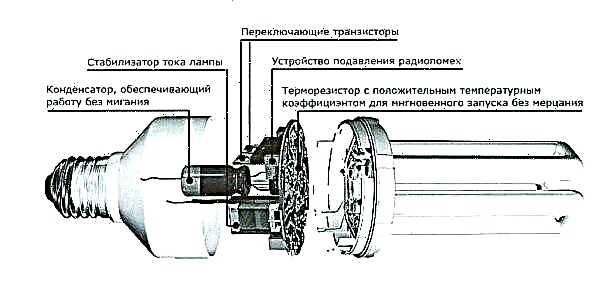
In life, use CFL. For large and spacious technological premises, administrative offices, non-compact fluorescent lamps are used. In most cases, the products have a spiral bulb and a standard screw base, so it is easy to replace incandescent lamps.
LED
Today, LED electrical products are the best light source. They do not have the disadvantages characteristic of other bulbs, consume a minimum of electric energy and are more durable in comparison with CFL. Inside there is neither a tungsten filament, nor harmful substances that fill the flask of fluorescent devices. The LED diode acts as a light source, the glow principle of which is built on an electronic circuit.
In the store you can find full-fledged LED lamps or individual bulbs designed to replace standard ones.

Halogen devices
Often, halogens are attributed to energy-saving products - this is not true. Despite their durability in comparison with incandescent lamps, in terms of the amount of electricity consumed and their service life they are inferior to CFLs and LEDs. In fact, a halogen is the same “Ilyich’s bulb,” with a flask filled with iodine or boron vapor. Both substances are halogen, hence the name of the product.
When the voltage is applied to a regular lamp for a long time, the tungsten atoms used to produce the spiral gradually evaporate, for this reason they fail more quickly. If halogens are added to the flask, a reaction will arise between them and tungsten, followed by the formation of compounds. When the molecules decay, tungsten will return to the spiral, which will lead to an increase in the durability of the product itself.
When operating a halogen with a dimmer (a device for changing the brightness), the service life increases from 3 - 5 to 8 - 12 thousand hours. The devices are characterized by high color rendering, compactness, a variety of shapes and do not need specific disposal. The short term of operation and the lack of efficiency do not allow attributing these products to energy-saving ones.

The main characteristics of the lighting elements
There are several important parameters for lighting fixtures:
- power - affects electricity consumption,
- power factor - the ratio between active and reactive,
- color rendering - measured in Kelvin (the lower the more warm the light is)
- luminous flux - indicates the brightness of the source,
- warm-up time - after what period of time the lamp will light up at 60 - 80% of the maximum brightness,
- ignition time
- color rendering index - the higher the better
- service life - is calculated in hours (after this time period, the lamp brightness drops to 70% of the nominal),
- number of switching cycles.
The simplest advice on choosing a star is to focus on well-known brands. If you first heard the name of the manufacturer of the CFL or LED lamp, refuse to purchase. Brand companies always care about the quality of the product.
Power
The power of electrical elements varies from 7 to 250 watts. When choosing a parameter, one should take into account the fact that the ratio of power and luminous flux of products is 5 times higher than that of conventional incandescent lamps. If the power of the “Ilyich’s bulb” used earlier was 100 W, in case of replacement with an energy-saving one it is enough to choose a light source of 20 W.
A simple pattern is observed - with increasing power, the brightness increases.

Advantages and disadvantages of energy-saving lamps
It so happened that luminescent types of lamps are considered to be energy-saving for some reason. However, the same energy-saving LEDs are in many ways superior to them both in price and in terms of energy efficiency, not to mention incandescent lamps. Therefore, we will compare and disassemble both types of "energy-saving" - both luminescent and LED. Each type has its advantages and disadvantages.
Compact fluorescent tubes
This type is most common in everyday life. They are called compact because of their size.

Unlike large lamps, these provide for the use in conventional socles in houses and apartments. The advantages of this type of lighting are quite extensive:
- Compared with incandescent lamps, they have a higher light output, saving 78-85% energy consumption,
- the emitted light does not come from one point, but evenly from the entire surface of the bulb,
- with infrequent on and off cycles, the lamp lasts much longer than its incandescent fellow,
- a wide range of different color temperatures,
- much less heating of the lamp itself during operation.
Well, now a little about the flaws:
- manufacturers recommend leaving a small time interval between on and off cycles, since the lamps have a pre-start system,
- fluorescent lamps are capricious of their environment and the purity of the current. That is, at low temperatures, the stable operation of the lamp is not guaranteed. Also, if the voltage drop is more than 10%, the lamp may not light up at all. Humidity is an equally important factor for a fluorescent lamp. When starting inside, the voltage can rise to 1000 V, and increased humidity can cause breakdowns,
- inability to use in emergency situations and malfunctions. At a time when incandescent lamps will burn with a small voltage drop, the fluorescent ones will not even be able to start,
- although the latest models of energy-saving fluorescent lamps have a markedly reduced level of mercury, it is still there. And if a large number of lamps are damaged in one room, there is a risk of poisoning with mercury vapor.
How does a compact energy-saving fluorescent lamp
A compact fluorescent lamp consists of a bulb, inside of which two electrodes are placed at the edges, forming an arc discharge when current is applied. Since the lamp is filled with a special inert gas and mercury vapor, the discharge causes ultraviolet radiation.
To get visible light, the entire inner area of the bulb is covered with a special substance - a phosphor, which when absorbed by ultraviolet radiation emits ordinary light. By changing the composition of the phosphor, you can get different shades of the lamp.
In order to ignite a fluorescent lamp, it is necessary to apply a high voltage pulse to the electrodes, since in the cold state it has a high resistance. For this, special devices are used - ballasts, or ballasts. They briefly increase the voltage, “light up” the lamp, and then the power is supplied from ordinary current. In modern compact fluorescent lamps, ballasts are integrated directly into the base.
Application depending on the parameters of the base
Each type of lamp contains a base for connecting the lamp to the cartridge. Basically, all manufacturers mark on it a suitable size (diameter) of the base. Common marking is E14. A base diameter of 14 mm is common in lamps that work from 220 V. More often there is the marking E27 - a chandelier, just bulbs that also work from a 220V network.
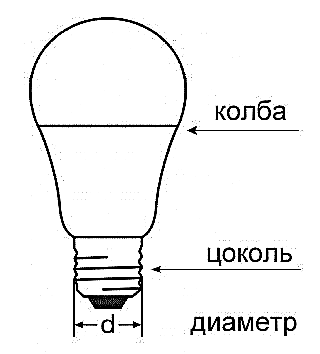
A bulb with the marking E40 is used for lighting industrial buildings, facilities, streets.
The shape and weight of energy-saving lamps
Fluorescent lamps can have the most diverse form: spirals, horseshoes, various geometric shapes. This does not affect the power of light and its energy consumption. But it affects the overall size. Usually, fluorescent lamps, in view of the introduced ballast system and the bulb itself, look very massive in chandeliers and lamps. Naturally, this affects their weight.
LED lamps can also have different sizes. However, recently there has been a tendency to produce them in the form of standard forms, like incandescent lamps. That is, a standard bulb coated with a compound scattering light, and inside is a block with LEDs. Thus, this format of lamps most succinctly fits into the styles of chandeliers and lamps. Yes, even a lonely hanging LED lamp on the wires with a cartridge looks very organic.
What parameters are important for energy-saving lamps for the home
Naturally, the two most important characteristics that influence the choice are energy consumption and service life. It is these two indicators that help determine which energy-saving lamp is better. If the first we can determine in advance, having a little understanding of the types of lamps, then the manufacturer is more responsible for the service life. What materials he used in the manufacture can greatly affect the life of the machine.
Power saving lamp table
The power of the lamps is usually expressed by the consumption of electricity by them and measured in watts. Depending on the type of energy-saving lamp, the power may be different. However, it is better to compare them in relation to light output. That is, how many lumens per watt one or another type of lamp produces. Here is a comparison table of different types of lamps in comparison with a simple one.
Trademarks and Life Span of Energy Saving Lamps
With regard to trademarks, it is difficult to predict something. Today, even the most trusted companies produce excellent long-playing models, and tomorrow a batch of low-quality components may come across. And sometimes even a small new company, new to the market, may present inexpensive, but high-quality products.
In any case, each manufacturer considers it his duty to indicate the estimated lamp life on the package. And it’s worth choosing in the direction of greatest importance.
Why does the energy-saving lamp blink or blink
Probably, many noticed this amazing effect. And the lamp can blink even when the switch is off. And maybe it's on fluorescent and LED lamps. In fact, there is nothing supernatural here. Just most often, the blinking is caused by a switch with an indicator. This is such a switch with its own LED that glows in the off state to detect itself in the dark. The fact is that a current is also supplied to it, which is too weak to maintain the glow of the incandescent bulb, but is sufficient to try to start a fluorescent or LED. This problem is solved simply - an indicator is removed from the switch. Everything. Blinking should no longer bother you.
However, the lamps may blink even without an indicator switch and even when turned on. This can be caused by interference during operation of capacitors inside the ballast box, during voltage drops in the network, as well as during malfunction of the ballast. Interestingly, lamps can sometimes blink as a part of one chandelier when there are more than 3 of them.
Are energy-saving lamps harmful to human health
If you properly operate any lamps, then they will not affect the state of people in any way. The LED type in general, even potentially, does not have the ability to harm a person, but the luminescent ones contain small volumes of mercury vapor. However, in order to have a serious impact on health, you must immediately break up a large number of lamps in one small room. In general, poisoning or any human exposure due to energy-saving lamps is extremely rare.
How to choose an energy-saving light bulb - recommendations of our editors
As always, the choice starts with a budget. High-quality lamps, whether fluorescent or LED, are always more expensive. There is also a difference in price between the LED and the luminescent type - usually the second is more expensive.
You need to select power based on the approximate ratio of watts of an ordinary light bulb and energy-saving types. For luminescent, this indicator is 1: 5. That is, an incandescent lamp of 100 watts can be replaced by a luminous power of 20 watts in terms of luminous flux. LEDs are still better - the difference can be 8-10 times. That is, an ordinary 60 W bulb shines the same way as a 6 W LED.
Color temperature - what color the light is on. Pure white or slightly yellowish - all this is determined by the color temperature. Each gradation has its own value, measured in kelvins. This is how the color table looks.
 Color temperature tables
Color temperature tables
Well, with the base when choosing everything is clear. The vast majority of household appliances work on E27. Less often - at E14.
ASD E27 11W 3000K
Actually, all the necessary parameters are already indicated in the name. A standard socket is 27 mm, 11 W and a temperature of 3000 K, that is, approximately, like an incandescent lamp. The shape of the model is a pear or the most ordinary bulb familiar to us. The manufacturer declared service life is 30,000 hours. The equivalent power of the incandescent type is 100 watts. At the same time, a light bulb costs only 50 rubles.
Feedback on ASDE27 11W 3000K:
 More information on Yandex.Market: https://market.yandex.ru/product--lampa-asd-e27-11vt-3000k/36972782/reviews?track=tabs
More information on Yandex.Market: https://market.yandex.ru/product--lampa-asd-e27-11vt-3000k/36972782/reviews?track=tabs
Another review on ASDE27 11 W 3000 K:
 More information on Yandex.Market: https://market.yandex.ru/product--lampa-asd-e27-11vt-3000k/36972782/reviews?track=tabs
More information on Yandex.Market: https://market.yandex.ru/product--lampa-asd-e27-11vt-3000k/36972782/reviews?track=tabs
Gauss E27 15W 4100K
A more expensive model for 200 rubles. The bulb shape is a standard bulb. Base - E27. The color temperature is indicated at 4100 K, that is, white daylight. A power of 15 W corresponds to a 120 W incandescent lamp.
Feedback on Gauss E27 15W 4100K:
 More information on Yandex.Market: https://market.yandex.ru/product--lampa-gauss-e27-15vt-4100k/1972984681/reviews?track=tabs
More information on Yandex.Market: https://market.yandex.ru/product--lampa-gauss-e27-15vt-4100k/1972984681/reviews?track=tabs
Another review on the Gauss E27 15W 4100K:
 More information on Yandex.Market: https://market.yandex.ru/product--lampa-gauss-e27-15vt-4100k/1972984681/reviews?track=tabs
More information on Yandex.Market: https://market.yandex.ru/product--lampa-gauss-e27-15vt-4100k/1972984681/reviews?track=tabs
Xiaomi E27 9W 6500K
A very expensive model from a famous brand. You can buy it for 1400 rubles. The lamp shines with a cool white light. But the maximum number of hours worked is 96360. Also, the lamp is smart, that is, it can be controlled from a smartphone.
Feedback on Xiaomi E27 9W 6500K:
 More information on Yandex.Market: https://market.yandex.ru/product--lampa-xiaomi-e27-9vt-6500k/1718299590/reviews?track=tabs
More information on Yandex.Market: https://market.yandex.ru/product--lampa-xiaomi-e27-9vt-6500k/1718299590/reviews?track=tabs
Colour temperature
At the same power, the lamp can shine in different shades - warmer, close to yellow, neutral or cold white. Kelvin is used as the unit of measurement, and the value is in the range 2700 - 6500 K. For the apartment, more neutral shades are chosen - energy-saving products with a color temperature of about 4000 K.
Color rendering index
Depending on the color rendering index (CRI), the visual organs perceive colors of objects reflecting light differently. The standard in this regard is called sunlight - CRI is 100 units. Artificial sources are less important, but the closer it is to 100, the more natural the colors turn out. A modern energy-saving lamp operates with a CRI of at least 80.
Product labeling contains three numbers. For example, if the designation indicates the number "940", the bulb is made with a color rendering of 90 and a temperature of 4000 K.

Base Type
Despite the advent of modern technologies in human life, the classic Edison base with a diameter of 27 mm - E27 is still the most popular. Most of the lighting fixtures are designed for use with such a base. Initially, this was the standard for incandescent lamps, so manufacturers decided to do everything for maximum ease of use and created the E27 housekeepers.
Some smaller fixtures (table and wall) use a smaller base - E14. Huge and powerful devices are equipped with a 40 mm base - E40. If you cannot independently determine the type of cap, take an incandescent bulb to the store.
In everyday life, lamps with pin contacts are used (instead of screw connections). In this case, the marking of the cap has the letter G, and the next number indicates the distance between the pins, measured in millimeters. For example, the G10 cap has a distance of 10 mm.
Bulb shape
If not only the physical parameters that affect the brightness and power consumption are important, but also the decorative component, it is best to buy LED products, the shape of which can be completely different - from a candle to a ball, etc.

Halogens and ordinary incandescent bulbs are no less diverse, but saving will not work here. As for CFL, the shape of the product is either spiral or tubular.
Rules and precautions for use
The flickering of fluorescent bulbs negatively affects both the product itself (leading to rapid burnout) and the person’s well-being - vision deteriorates, nervousness increases and after a few minutes there is severe fatigue.
Here are some of the reasons that cause the flickering of an energy-saving light bulb, and ways to eliminate the effect:
- all switches must be connected to the phase (not to "zero"),
- during CFL operation it is forbidden to use illuminated switches,
- use high-quality light sources with a delay of about 2 seconds - in this case, blinking is excluded even if there is night illumination on the switch,
- if housekeepers are used in a chandelier, it is advisable to screw an ordinary light bulb into one of the shades.
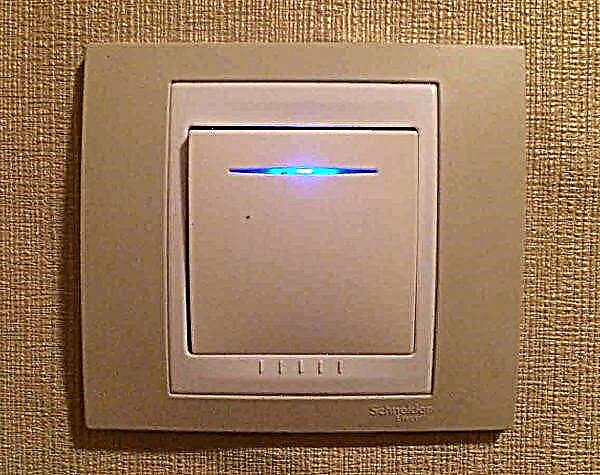
Medium-power products contain about 1 mg of mercury - like in a ball at the end of a clerical pen. For comparison: a thermometer contains 500 mg of mercury. Despite such an obvious and huge difference in the mercury content, do not forget to be careful when using them. Small amounts of fumes in the air can cause serious damage to health.
Disposal
Specific disposal is only required for fluorescent products that contain mercury vapor in the flask. LED bulbs can be thrown into ordinary trash - where ordinary and halogen.
Energy-saving lamps are a great option for people who want to save on electricity. A huge number of advantages make CFLs preferable to conventional or halogen ones.
If you choose a specific model, it is better to overpay a little and purchase LED products, which are characterized by greater durability and exclude negative effects on human well-being.
Types of energy-saving lamps
Energy-saving lamps are devices whose energy consumption is several times lower compared to an incandescent lamp. So "housekeepers" consume 5-10 times less electricity than incandescent lamps, but at the same time emit a luminous flux of the same power. The following types of energy-saving lamps for the home are distinguished:
- Luminescent.
- LED light.
Unlike ordinary Illich lamps, energy-saving ones do not heat up so much and have a longer life. There are dozens of varieties in terms of light spectrum, type of cap, bulb size, and other indicators.

VOLPE E14 T2 15W 6400K
This is a budget 15 W luminescent model, which corresponds to a 75 W incandescent lamp. A luminous flux of 860 lm is enough to illuminate the corridor in the hallway, barn or garage. It can last up to 10,000 hours, which is about a year and a half.
Such a lamp is suitable for fixtures with an E14 lampholder - this is a reduced base diameter, which is suitable for many chandeliers and fixtures. Therefore, if there are 2 - 3 bulbs in the chandelier, it is able to qualitatively illuminate the living room or bedroom.
TDM ELECTRIC E27 T2 20W 6500K
The lamp of domestic production is equipped with a standard E27 base (base diameter 27 mm), so it is suitable for most cartridges. Its power is 20 W, which corresponds to 100 W of an incandescent lamp - this is, so to speak, the standard for a room with an area of up to 15 m 2. The average life of the device under normal conditions is 10,000 hours.
Camelion 10407, E27, 45 W
A 45 W lamp has a luminous flux of 2745 lm - this is enough to illuminate a large room, office or classroom in a school. She corresponds to an incandescent lamp of 225 watts.
The Camelion lamp works normally in the voltage range of 207 to 244 V. Therefore, if you do not have frequent voltage drops in the network, then this model is for you. Its service life is 10,000 hours - however, as with most luminescent models.
OSRAM Led Star Classic 827 FR, E27, A60, 9.5 W
Many are still convinced that the products of world leaders (OSRAM, Philips) are very expensive. Today, this is not entirely true: look, for example, at the OSRAM Star Classic series lamp. You can buy one for less than 100 rubles, while the manufacturer guarantees an “honest” power of 9.5 W and a service life of up to 15,000 hours. Warm white light is suitable for both the bedroom and for rooms such as a corridor or study.
ERA B0020629, E27, P45, 6 W
An inexpensive LED light bulb from the company ERA is able to last 25,000 hours. Its power is only 6 watts, which corresponds to 40 watts of an incandescent lamp. For the most part, it is convenient for installation in the toilet, since, for example, when you visit this room at night, it does not hurt your eyes much. It can also be screwed to illuminate storage rooms, cabinets and other rooms where people are relatively rare.
Its average price in stores is 50-60 rubles. For a long service life, she will pay off her price in full. It fits a conventional cartridge, which "accepts" socles with a diameter of 27 mm.
Lightstar E27 G95 13W 4200K
A 13-watt, balloon-like LED bulb is suitable for lighting a room in a house with an area of up to 20 m 2. A lamp is made in Italy, than the manufacturer appeals, talking about its high quality. The dull bulb has a pleasant warm light (as close to daylight as possible). One of its main advantages is the ability to connect a dimmer. A dimmer is a bulb power regulator in a home lighting system that allows you to change the brightness to fit your needs.
Lightstar products appear from time to time in television programs such as Housing Issue and Repair School. The lamp has a life of 20,000 hours - not the longest for LED models, but it pays for its cost.
REV 32421 8, E27, 50W
A powerful German-made LED lamp of 50 W (equivalent to a 400 W incandescent lamp) is designed to illuminate repair boxes or a small home workshop. Fits a standard cartridge. The bulb gives out cool, saturated white light.
A light bulb can last up to 30,000 hours for its owner - three and a half years of continuous operation (and given that it does not work continuously, the service life is doubled). The cost of the lamp is certainly considerable, but you have to pay for German quality.
Manufacturers and Life
Very often there are situations that the same manufacturer released the goods in different batches, which turned out to be of different quality. But no matter what the batch, the life should be indicated on each package. Rating of manufacturers:
- Company Philips presented a huge range of LED bulbs for home use. Each batch undergoes laboratory tests that confirm safety. The light emitted does not affect the eyes. Warranty from the manufacturer 2 years. Service life is up to 10 years.
- Company Osram produces quality goods. He is in great demand in the market. The positive aspects of the LED lighting of this TM: energy savings, emitted light characteristics close to natural, long-term use. On the package it is indicated that it is designed to work 15,000 hours, which is equivalent to 15 years or 500,000 on / off.
- Well-known manufacturer Camelion with representation in 80 countries produces high quality goods. Passes control before going on sale. The BasicPower model claims work at 30,000 light hours. The BrightPower model is of increased efficiency, equipped with the latest generation LEDs and with up to 40,000 hours of operation. The product is safe for humans and the environment. No special disposal conditions are required. They have high impact resistance, there is no ultraviolet radiation. The emitted light is bright, but does not harm the eyes, does not flicker.
What to look for when buying
Parameters that are considered when purchasing energy-saving light bulbs:
- Power. To determine the required power, it is enough to divide the necessary power into five. For example, if the required power is 100V, then the bulb should be taken with a power of 20V. This definition of power is not suitable for all types.
- Light color and temperature. For the office, a cold shade with blueness and a temperature of up to 6.5 thousand K. is suitable. In a children's room, a natural shade with a temperature of 4.2 thousand K. is desirable.
- Lifetime. Each type and manufacturer has its own term. On average, from 3 to 15 thousand hours.
- Warranty Each manufacturer sets its warranty. Mostly from six months to three years.
- Product form. The choice of form is individual. It should correspond to the size of the lighting fixture, the design of the room.
Cheap options do not always correspond to the declared parameters. It could be a fake.
- Cap size. Most home appliances comply with the E27 marking, less often - E14.
We recommend watching a video review:
Price overview
Each type, model of ESL is different. Some examples:
- ASD E27 11W 3000K. Base with a diameter of 27 mm, temperature 3000K, almost like an incandescent bulb. The shape is pear-shaped for an ordinary light bulb. It works up to 30,000 hours. Power - 100 watts. The price is 50 rubles.
- Gauss E27 15W 4100K. The form is standard. The shade is white, daytime. Corresponds to 120W incandescent bulbs. The price is 150 rubles.
- Xiaomi E27 9W 6500K. Cool white tint. Hours worked - 96360. Available control from a smartphone. The price is 1400 rubles.
- Housekeeper E27 20W 4000K. Spiral shape. The shade of light is white, daylight. The price is 114 rubles.
- Camelion E27 26W. Spiral shape. Operating time 5000 hours. The price is 400 rubles.
- Svetozar E27 15W 2700K. Life time 8000 hours. The price is 100 rubles.
Finally
Energy-saving light bulbs save energy consumption. Subject to proper operation, they will last a long time. The issue of price and mercury content is an urgent issue for buyers. Even models have been developed where mercury is bound by a potassium amalgam, which prevents its evaporation when glass is damaged.
Useful information? Leave your comment, share the article with your friends on social networks.

